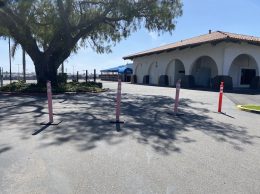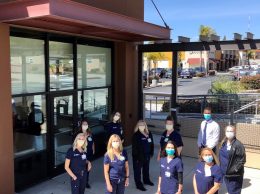
Three cities. Three different models for startups.
San Luis Obispo, Santa Barbara and Ventura each present fundamentally divergent approaches to helping new companies grow.
The purpose of this column is to explore a single question: Which is the best model for the rest of the region?
As reporter Alex Kacik writes in the current edition of the Business Times, a few wealthy donors, the city of San Luis Obispo, the Small Business Development Center and others have joined forces with Cal Poly’s Center for Innovation and Entrepreneurship to get the SLO HotHouse program up and running.
The incubator offers training, $7,500 in financial support and space inside a former Public Works Department building to startups run by students and recent graduates. I figure it’s only a matter of time before the HotHouse expands to help locally-generated startups that are outside the Cal Poly community.
Ventura, operating without a four-year university at its doorstep, has opened up a successful technology incubator in space located behind the City Hall. It’s focus is on software and clean tech companies, and it’s been able to fill the space — the city of Ventura has staff that are actively engaged in supporting the startup culture and the municipality’s investment in the incubator amounts to some $400,000 per year.
Then there is Santa Barbara, which doesn’t have a formal program or public space for supporting its burgeoning startup community. Instead it relies heavily on the private sector to help out with space and support services within the city limits — something that is not all bad.
When the former Santa Barbara Business & Technology Center, an incubator now occupied by Rightscale, stopped taking ouside tenants, architect Michael Holliday stepped up to create the Synergy Business & Technology Center in a warehouse area between East Beach and Highway 101. A number of organizations, including MIT Enterprise Forum, offer programs where startup entrepreneurs can network and find ways to get informal help.
For Santa Barbara, the real incubator is located in Isla Vista where UC Santa Barbara is the launch point for a few dozen startups each year. The UCSB Technology Management Program’s business plan competition is a major watering hole where entrepreneurs, funders and service providers mix and mingle and help get companies off the ground.
Each of the models has strengths and weaknesses. Cal Poly’s HotHouse is a cool idea, but it will need to connect its student enterprises quickly to the practical world of financing and operating a business or they will languish in what’s commonly called the “valley of death” between launch and a sustainable revenue stream.
Ventura’s strong infrastructure for startups allows it so attract companies, including some that might otherwise be based in Santa Barbara, with cheap rent and access to services.
Santa Barbara’s disaggregated approach has actually been surprisingly successful in part because it forces entrepreneurs to engage a number of parties to be successful — and that forces each startup to create its own network rather than rely on a single program to get going.
But in the final analysis if Santa Barbara wants to keep its startups from moving on when they get more successful it probably needs to engage more fully in the startup culture.
Thankfully, Santa Barbara city staff have been talking to some of the key players in innovation in an effort to figure out how the city can support its technology innovators.
The bottom line on the models for supporting startups is that only one thing is constant about our startup culture. It keeps changing.






 Print
Print Email
Email

















